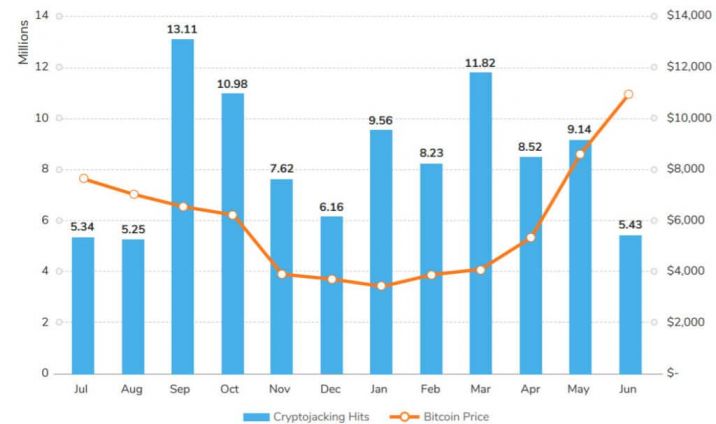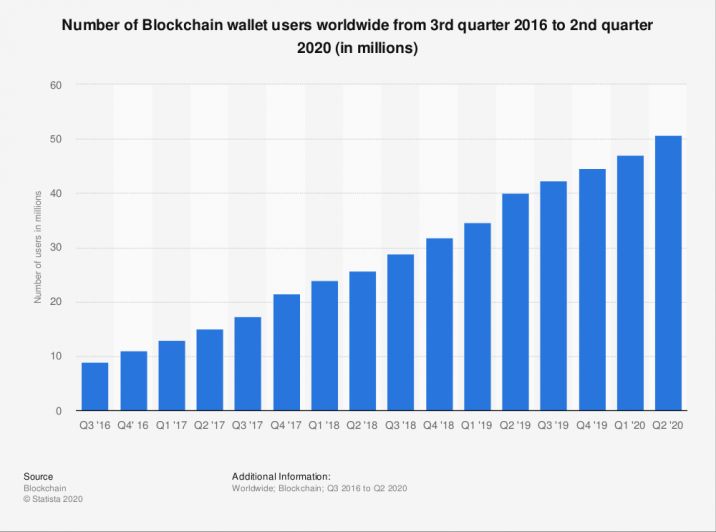Best Tips To Protect Your Crypto From The Latest Malware

Despite the positives and great potential of both cryptocurrencies and blockchain technology, the market has been marred by malware and hacks. Cryptocurrency scams, hacks, and malware attacks are still very common, and many people have fallen victim of this worldwide, which makes knowing how to protect your crypto even more critical.
It has been found that the relationship between cryptojacking, which is where hackers use malware to hijack the computing power of another person’s device to mine cryptocurrencies for themselves, is affected by the overall price of cryptocurrencies,. In 2019, this type of attack has been an enormous problem, with over 50 Million instances occurring in the year alone.

Furthermore, the total losses of revenue as a result of cryptocurrency-related attacks have ballooned to $4.5 Billion, which represents an increase in cryptocurrency crime of 160% when compared to the previous year. This presents a troubling picture highlighting both the increasing complexity of cryptocurrency crimes and a lax attitude towards security for many holders of cryptocurrencies.
Biggest Crypto Malware Attacks of 2020
Despite the massive increase in cryptojacking attacks during the year, there have still been several high profile hacks that have been more immediately damaging to organizations and individuals alike; these occasions show the importance of protecting your crypto from malware and shady actors.
Cashaa
During July of this year, a British-based cryptocurrency exchange named Cashaa fell victim to a devastating malware attack that resulted in 336 BTC theft. According to the valuation of Bitcoin at the time, this equates to a value of about £2.5 Million (British Pounds). The company deduced that the hacker might have installed malware inside their exchange transfer system, handling user withdrawals.
This was not enough to damage the exchange too much in the long-run, which managed to raise $5 Million to fuel expansion across the globe. Despite this, it is a stark warning that even exchanges in “cyber-secure” countries such as the UK can be targeted.

Electrum Wallet Theft
This is one of the attacks that shows that devastating cryptocurrency attacks do not only happen on exchanges, but they can also occur to individuals. On the 30th of August, 2020, a user on Github claimed that he had suffered from an attack that had drained 1,400 BTC from his Electrum Wallet. At the time of writing, there is no specific information on how the attack was perpetrated; however, the victim has stated that the attack occurred almost immediately after installing a new update for the Electrum Wallet.
As it stands, Binance has the most significant opportunity to identify the perpetrator of this crime. Despite this, it is still unlikely that the individual will be identified. Transactions on the platform connected to the wallet address from the initial transfer have been traced to St. Petersburg, Russia, however, it is unknown whether the perpetrator used a VPN to mask their true location.
Tips To Protect Your Crypto From The Latest Malware
Use a Secure Cryptocurrency Wallet
As evidenced by the Electrum Wallet hack that we previously mentioned, you must use a cryptocurrency wallet that is secure to protect your cryptos. It is well-known that hardware wallets are the most inherently secure forms of cryptocurrency wallets; however, a mobile wallet may be the best option for blending security and convenience.

It should be noted that a secure mobile cryptocurrency wallet should feature client-side encryption, log-in through secure pins, and will provide users with control over their private keys, never managing your private keys for you. It should also be noted that crypto wallets should not be used through public wifi connections, to diminish the risk.
Be “Cyber-Smart”’
This is one of those pieces of advice that seems obvious at first, yet so many people either forget to consider this or simply do not pay enough attention to it. To protect your cryptos from the latest malware attacks, you need to know what you are doing on the internet. It should also be noted that you should not hold all of your cryptos in the same wallet.
First and foremost, it should go without saying that you should never open any attachments or follow any links to a website that seems suspicious. This could be sent over email from someone that you have never spoken to or engaged with before. Secondly, it is important to make sure that you are using a password that isn’t easy to guess and is “strong”, which means that it includes various character types. This will make it a lot harder for any attackers to access your accounts.
Finally, it is also recommended that you invest in a high-quality anti-virus software on your devices, so that you can ensure that any upcoming threats can be detected and dealt with before they become a problem.
If You Do Get Attacked, Be Proactive In Learning
If at any point, you are unfortunate enough to fall victim to malware, affecting your cryptocurrency holdings, then this can be a useful opportunity for you to be reflective and think about what went wrong, and how you can make sure that it doesn’t happen again in the future. It is very unlikely that you will get your cryptos back if you lose them to a hacker, however, you may be able to check where your cryptos have gone by tracing the wallet address of the recipient if the cryptos are put on an exchange.
Then you should contact an expert so that they can advise you on how the attacker managed to gain access to your cryptos and how you can better defend yourself against similar attacks.
Conclusion
This article has reviewed the increasing prevalence of cryptocurrency-based malware attacks and some of the most notable attacks of this year. Furthermore, we have provided you with the best tips for protecting your crypto from the latest malware- which essentially involves being smart on the internet, consistently learning about how to stay secure in the ever-changing digital world, and choosing a secure cryptocurrency wallet.